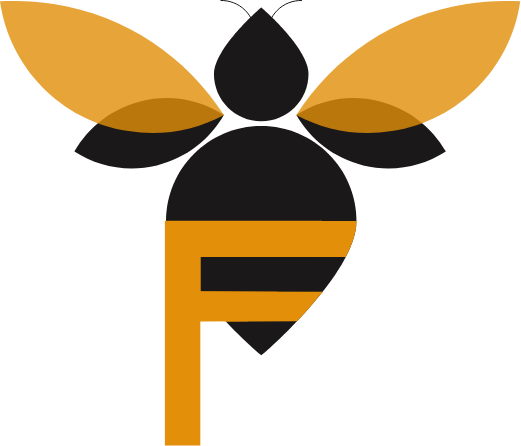JULY 2025
With the hot weather we had in June, I reckon the bees forage is about a month ahead this year. It was so hot last week that I put a sun umbrella over one of my colonies to protect it from the worst of the sun! Bramble, roses, lavender and lime trees are over and sweet chestnut trees are in full bloom. Heather seems to be on its way, but whether it will deliver this year is uncertain as it has been so dry – Crooksbury common was purple tinged this evening, and I have spotted my first Himalayan Balsam by the river recently.
What is going on in the hive?
The swarming season should in theory be over, it has certainly been quiet over the past couple of weeks. (Although I had a call from a neighbour last week thinking she had a swarm in a tree in her garden, but it turned out to be my honeybees taking advantage of her Honey Locust tree in bloom!). But keep checking your hives, and in particular, make sure they have plenty of room! The queen should be working hard now building up the brood in the hive, and the longer hours of daylight and warmth will mean the foragers will be out from early morning until the evening.
I managed to extract some lovely spring honey in June. If you are extracting then make sure you leave plenty for the bees – colonies are at peak size now so the bees will need plenty of stores, in case forage tails off or the weather turns wet.
Check your hives
You should continue your regular inspections once a week to look out for signs of swarming. It is also important to keep an eye on the health of the colony – look at the brood pattern, are the stores building up nicely, is there anything that looks unusual in the hive? If in doubt, maybe ask someone else to take a look – a second pair of eyes is always helpful I find.
In your regular inspections, the usual checklist applies:
* Do you see the queen or evidence of the queen (eggs, larvae brood in all stages)
* What does the brood pattern look like? If it is patchy it could indicate that the queen is failing, or a brood disease.
* Look out for evidence of disease
* What is the temperament like?
* Do you see drones?
* Do you see queen cells? Have your swarm prevention plan to hand. Just destroying any queen cells normally just delays the problem, so be ready to manage this situation.
* Are there sufficient stores – nectar and pollen?
Is there enough room? If in doubt, add another super!
Don’t forget to keep records updated!
Check the larder
Honeysuckle and nasturtiums are proving popular with bees at the moment, and oregano is just coming into bloom – Oregano has self seeded everywhere in my garden and the bees love it so much that I just let it spread. I am hoping to see my first “ghost” bee soon when they find the Himalayan Balsam.
Enjoy your bees!






